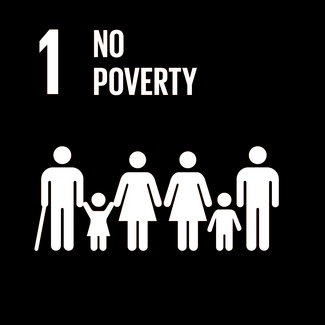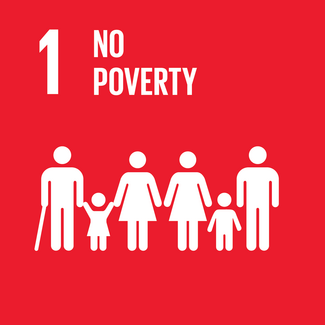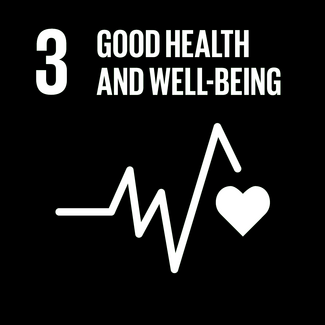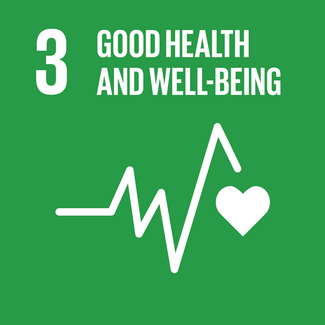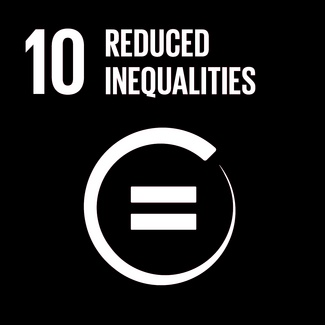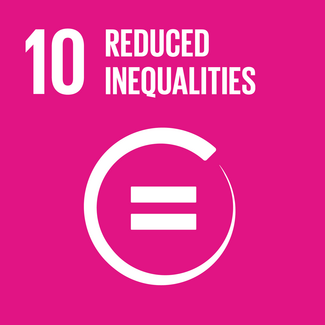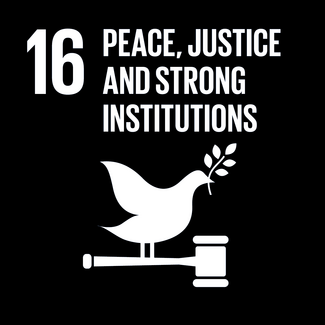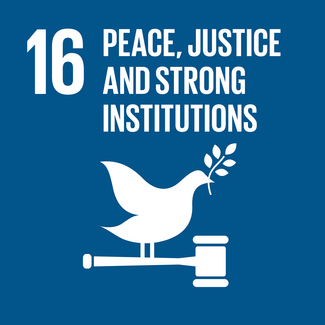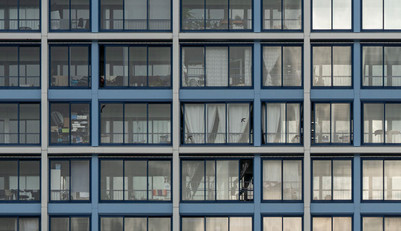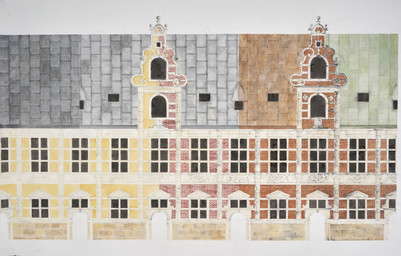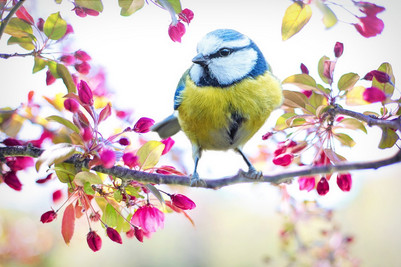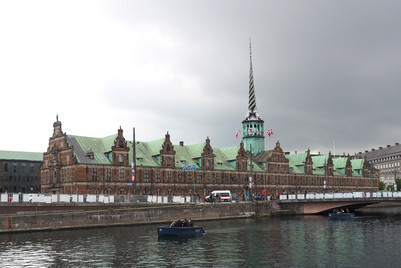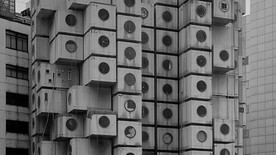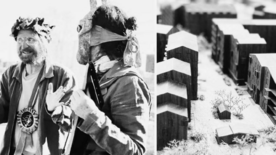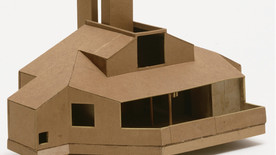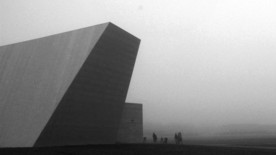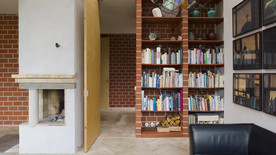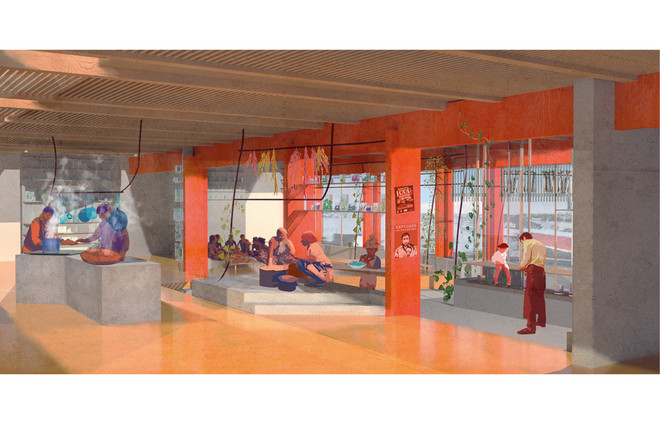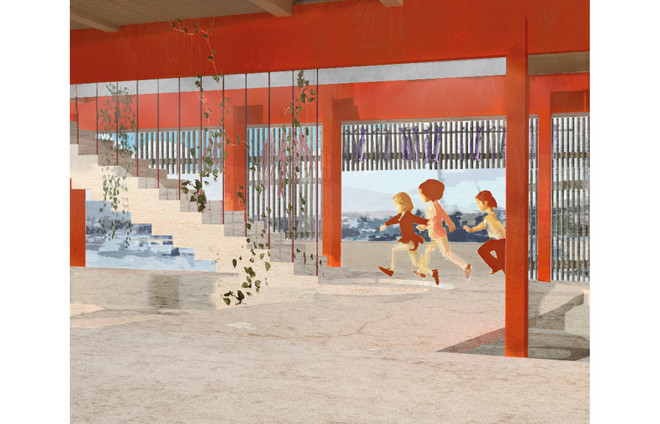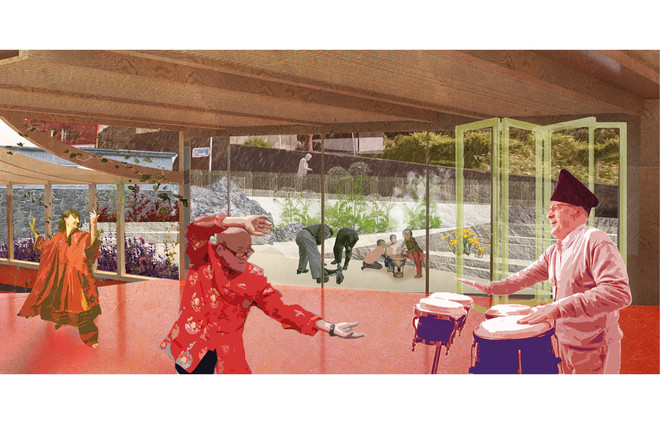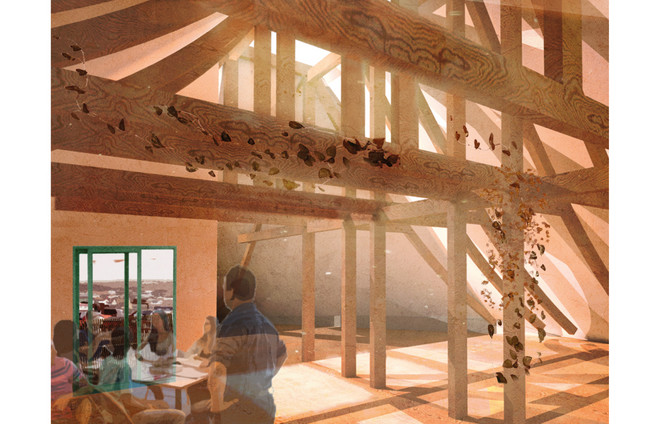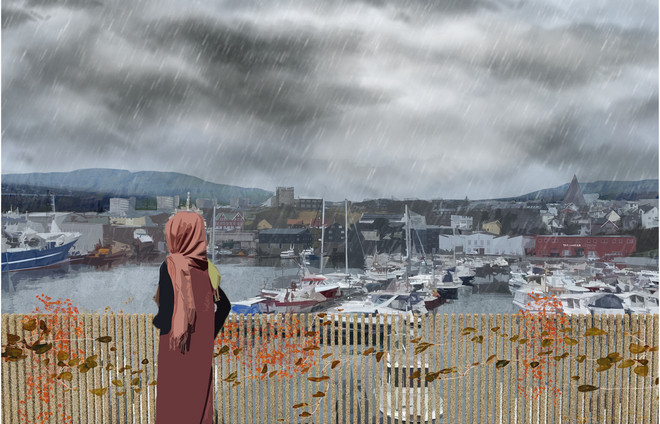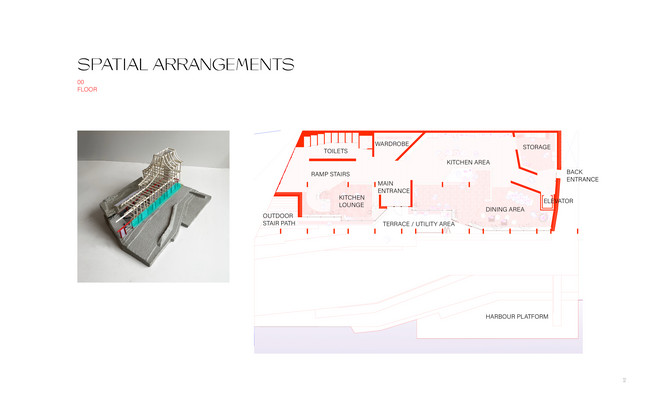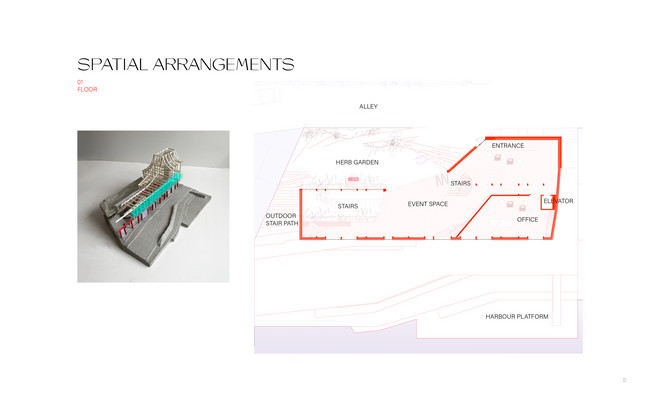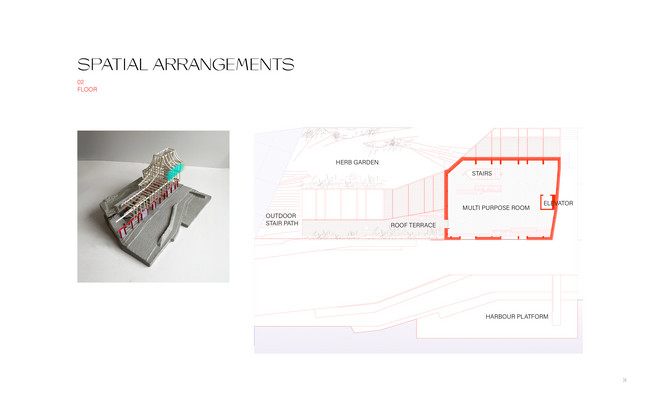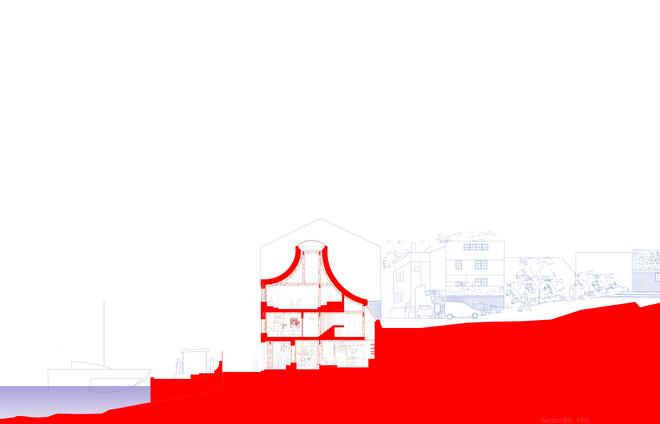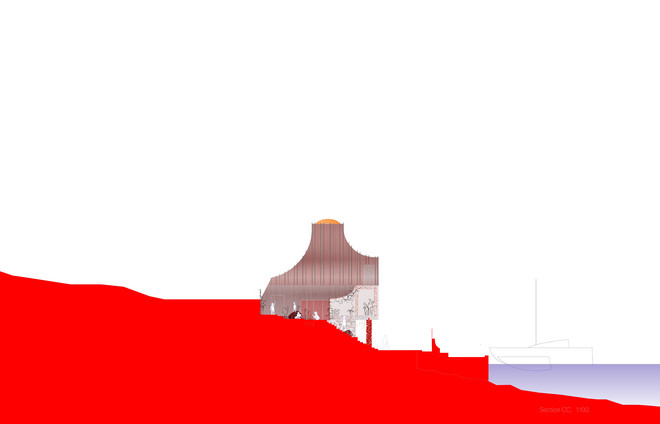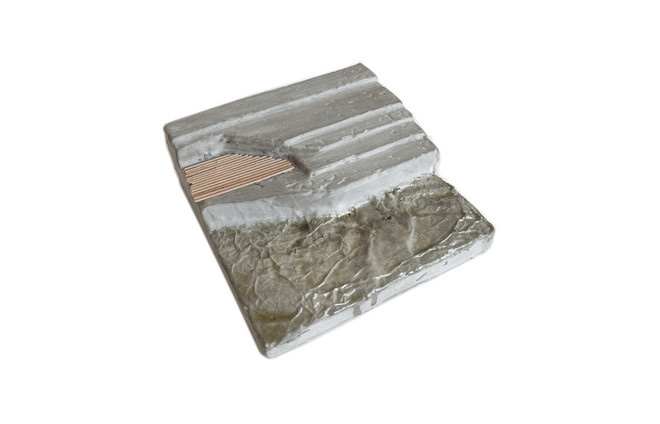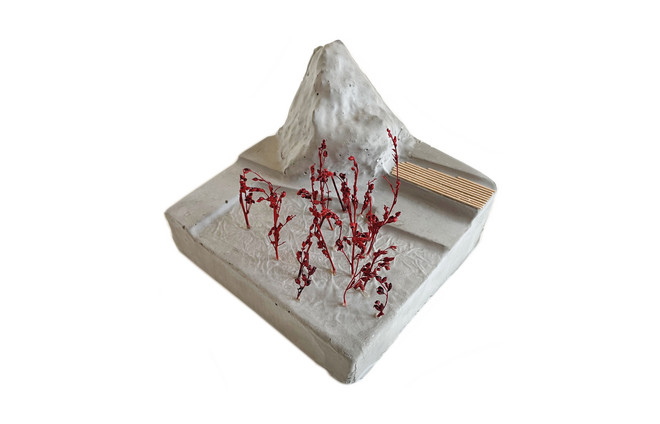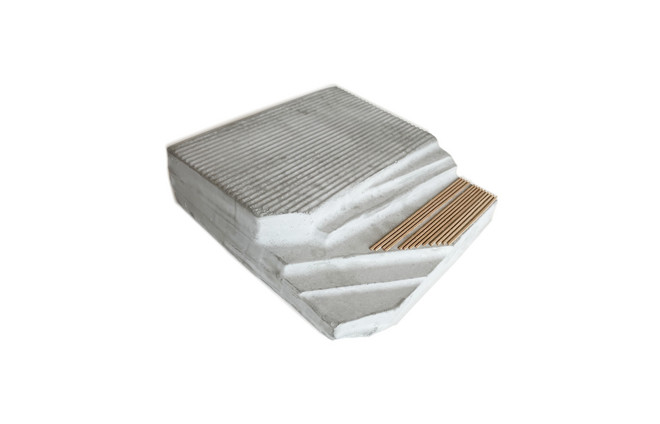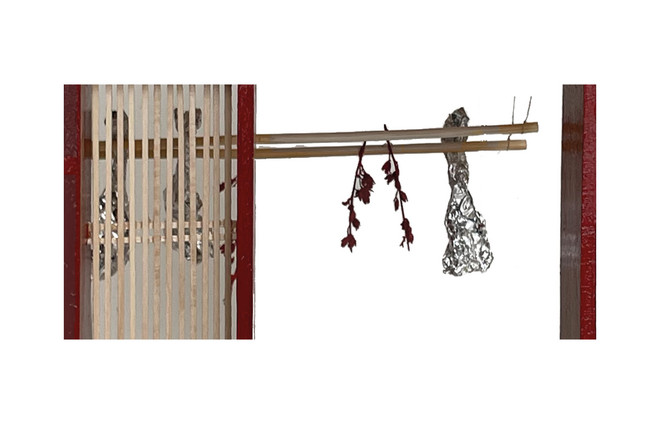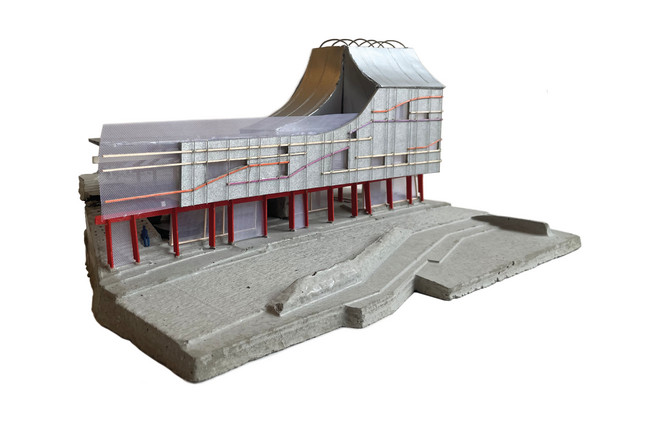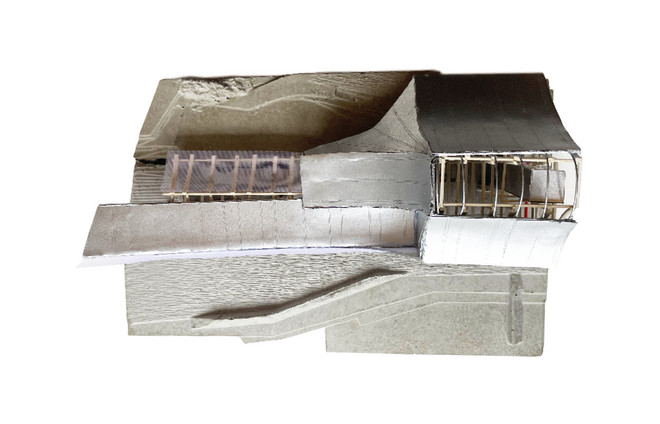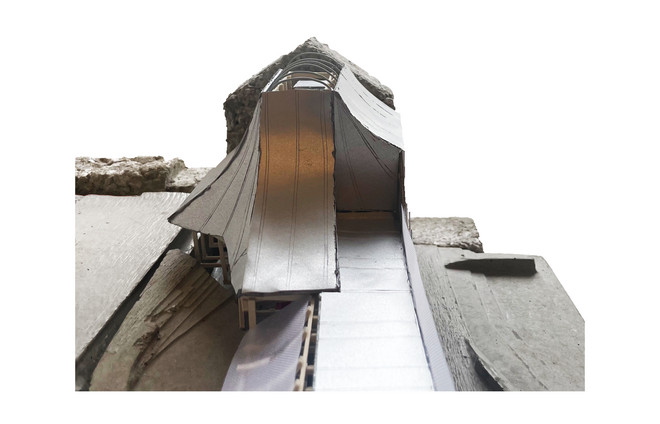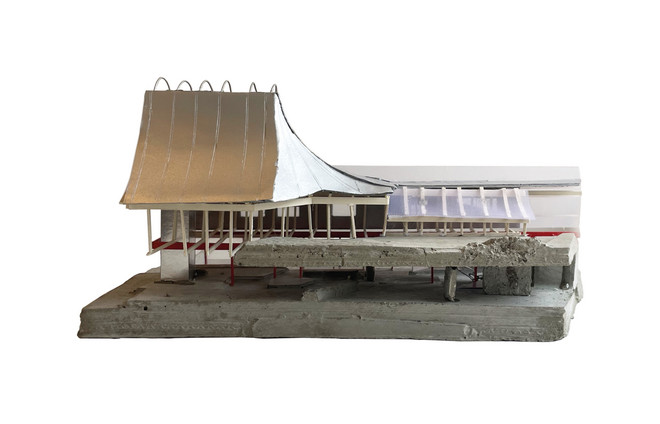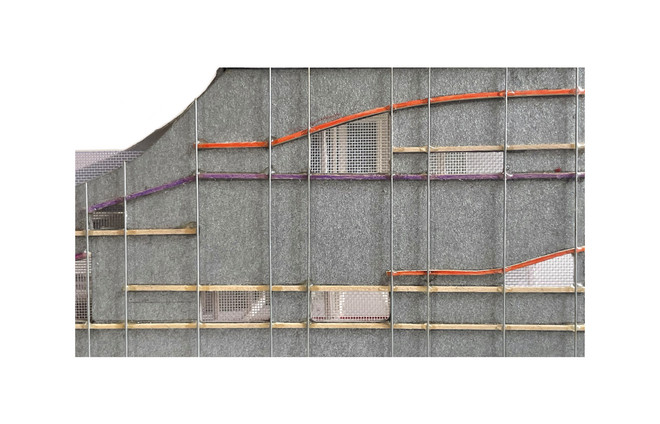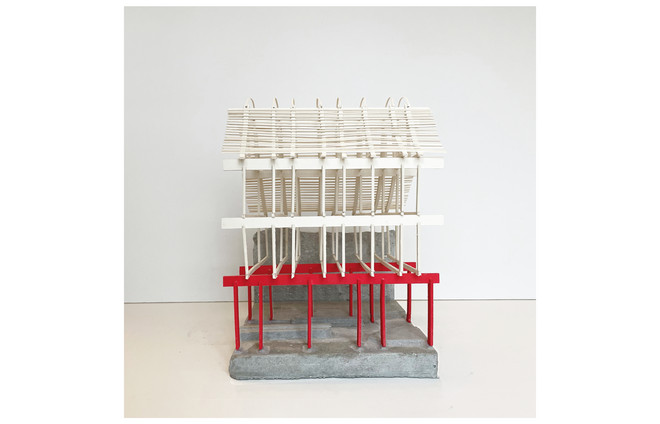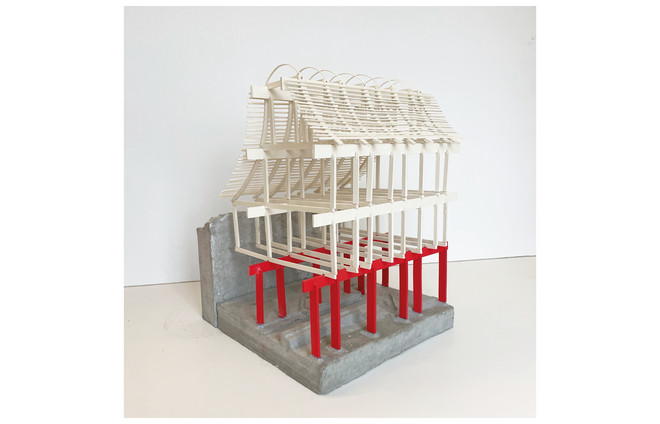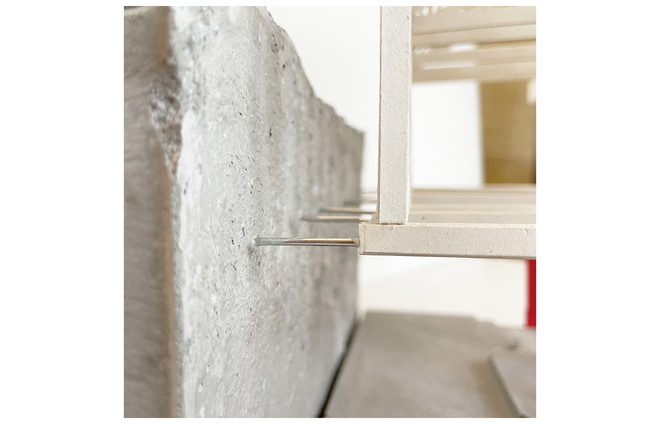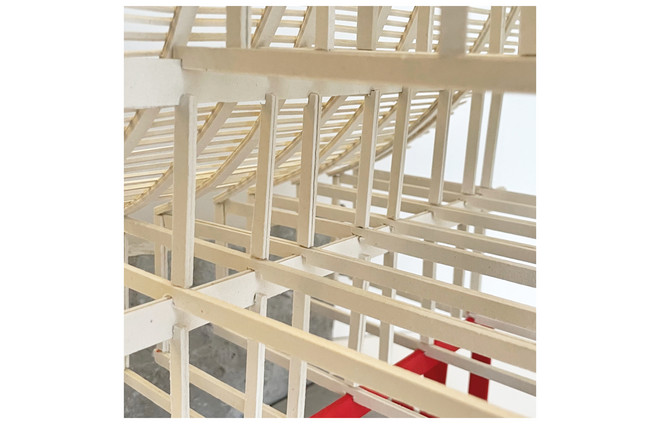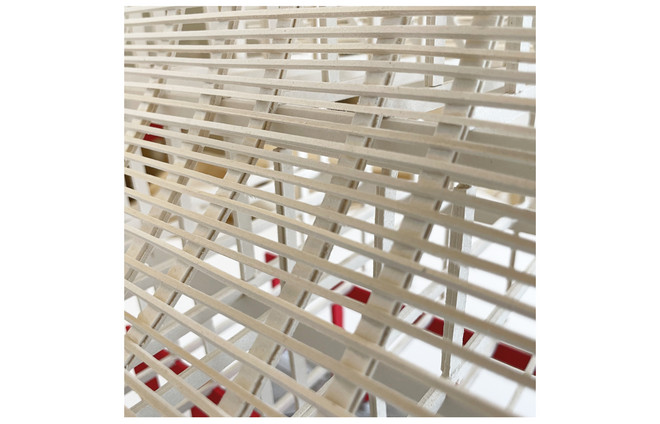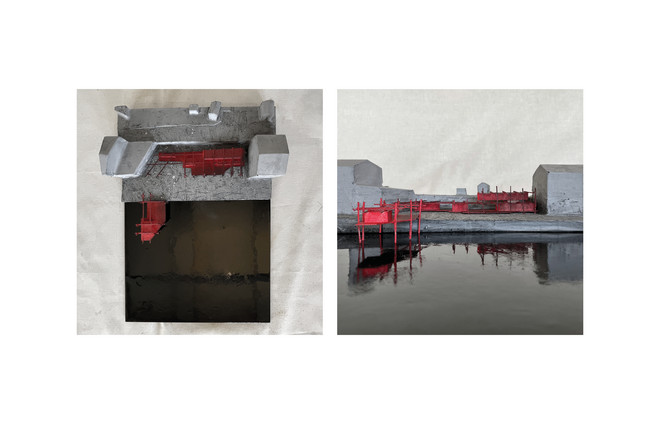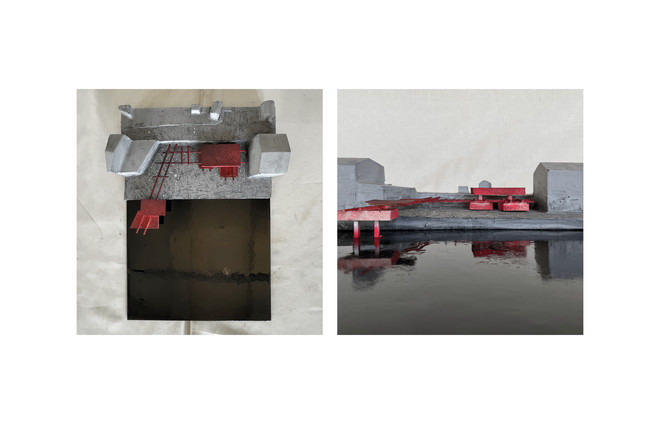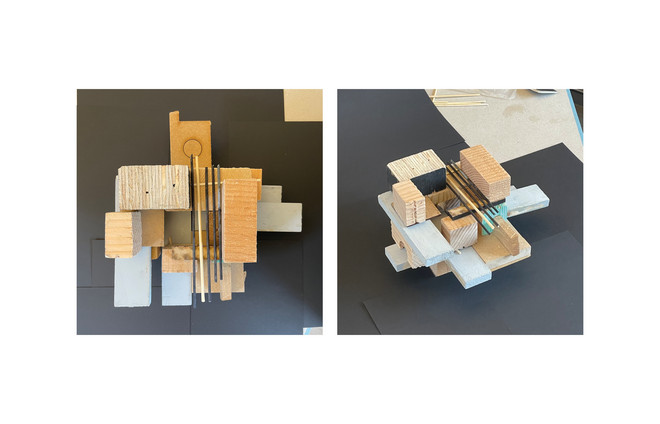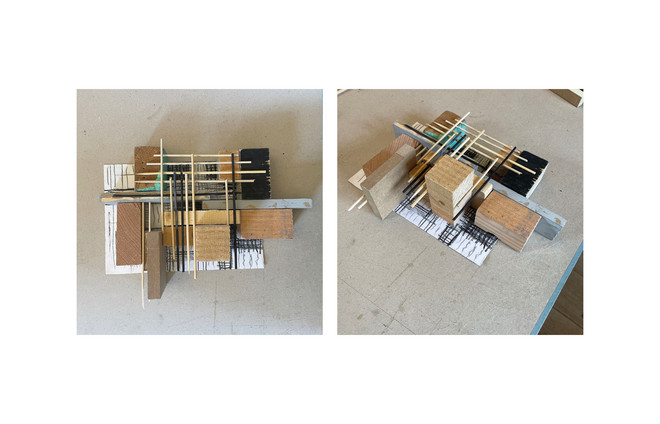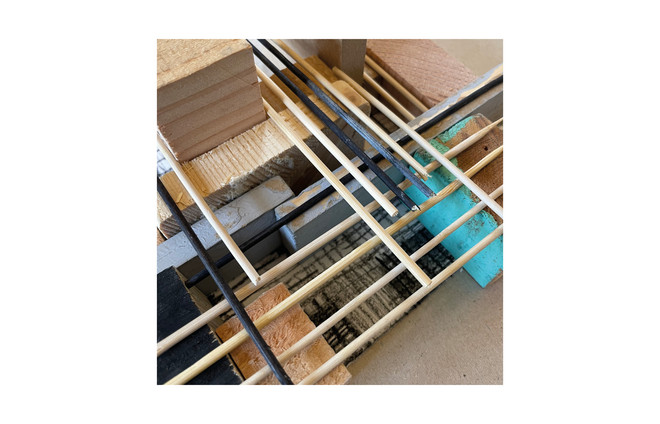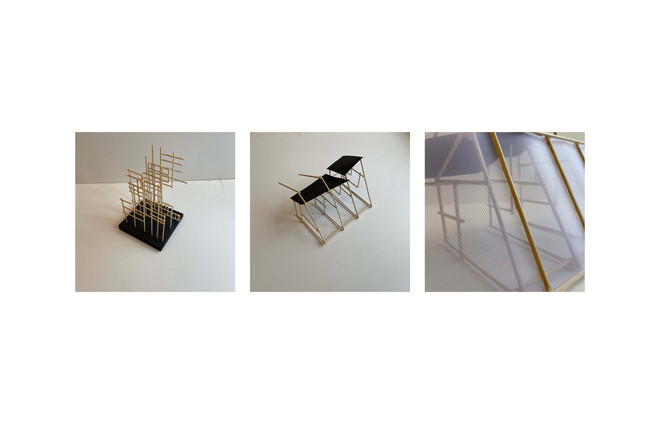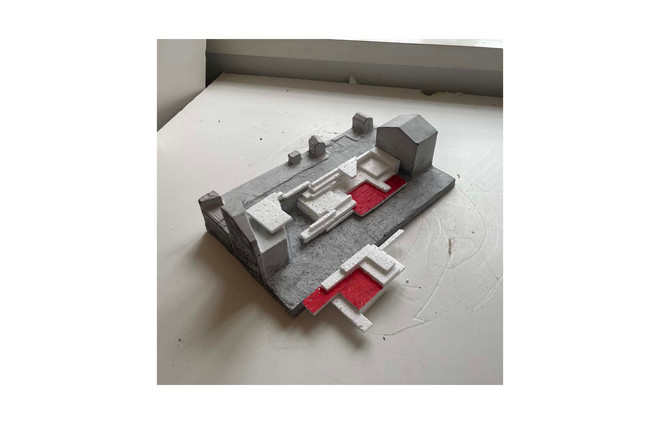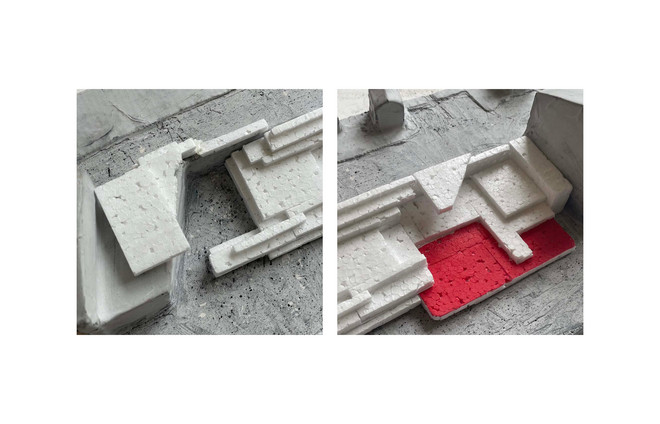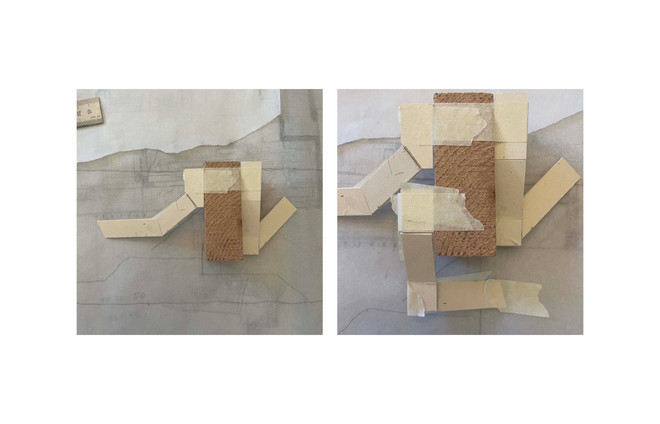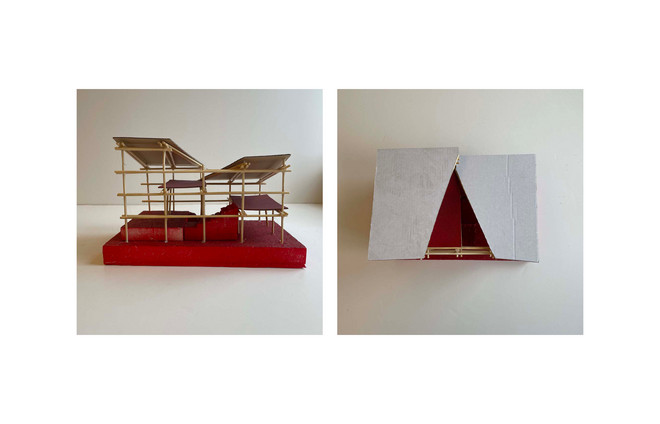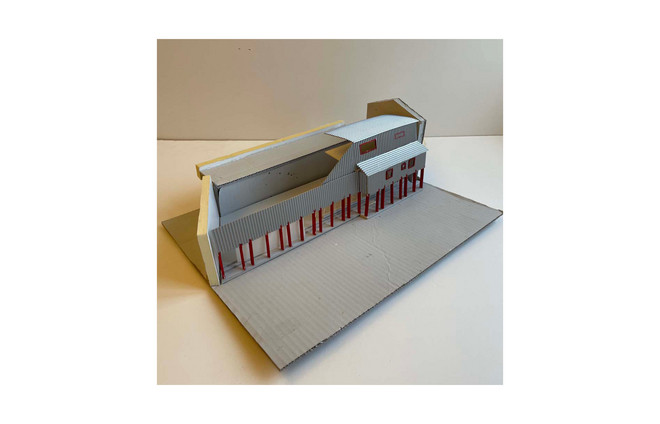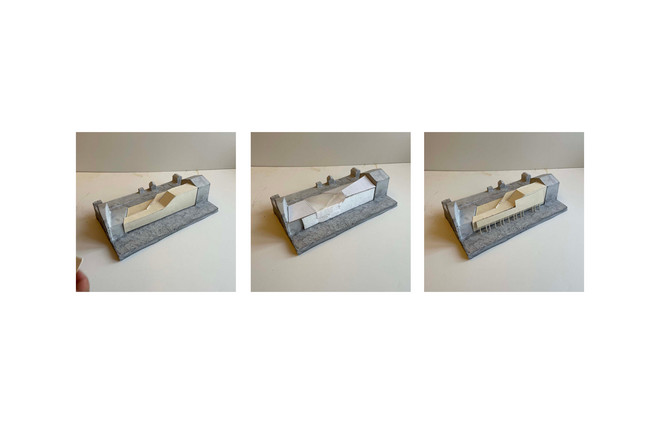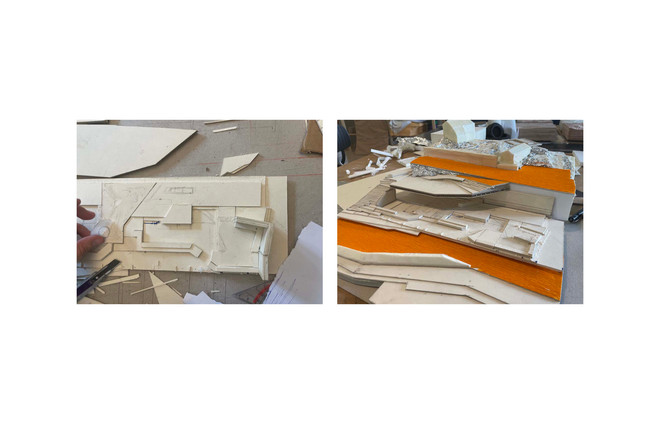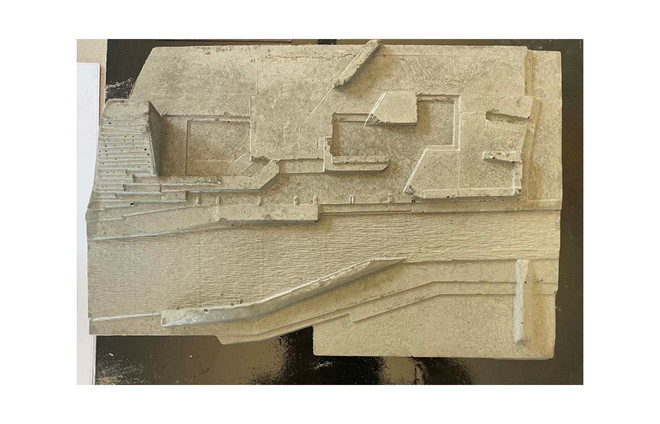
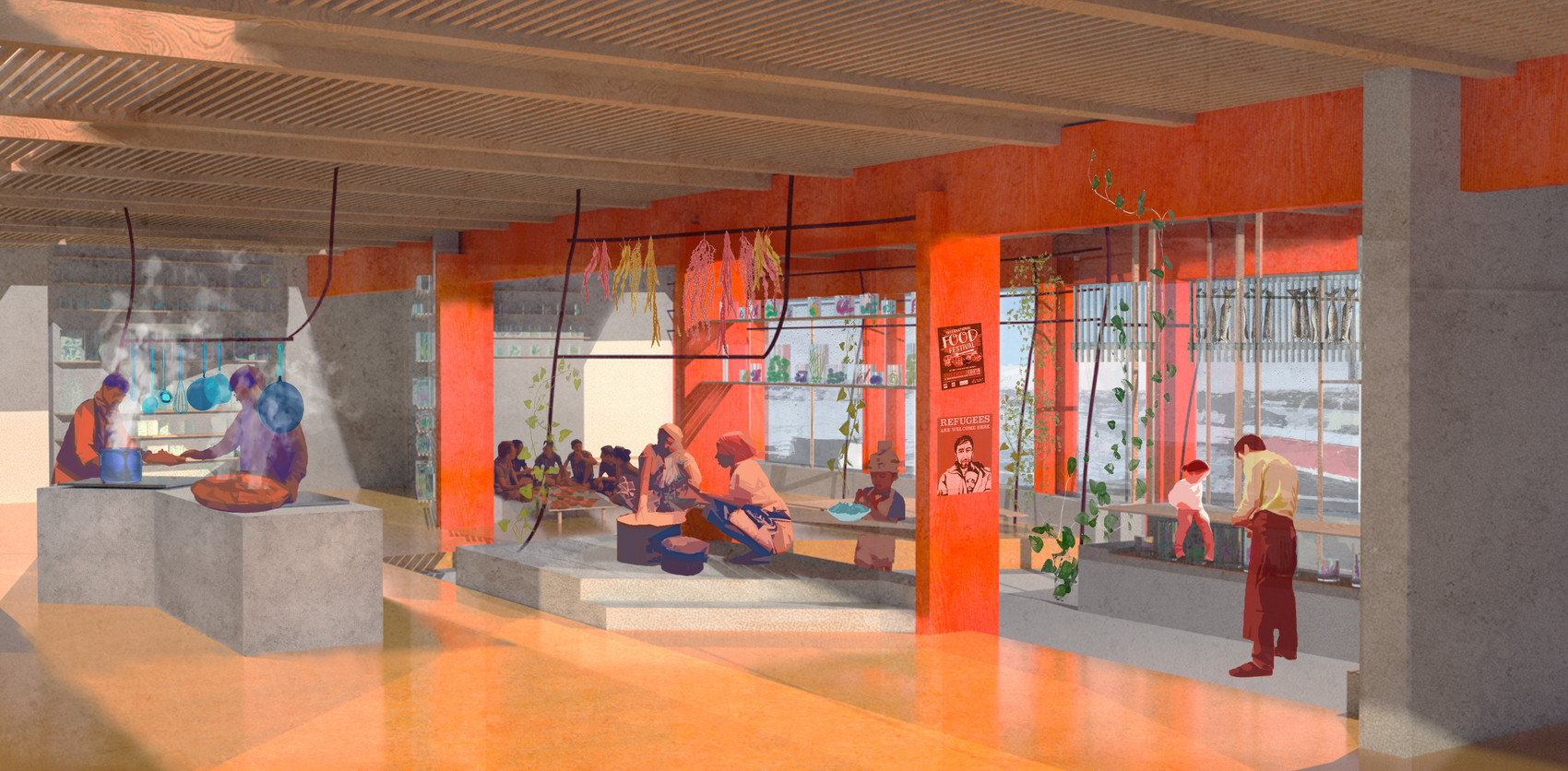
Eirið / Rethinking the Process of Integration Through Spaces
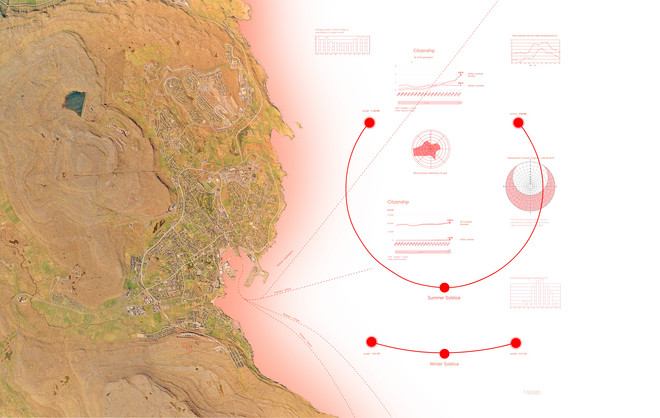
Eirið is an inclusive hub that encourages an open and active multicultural society, modeled in a Faroese context, in which the kitchen acts as a safe space that utilizes social cooking as a medium for successful integration. By incorporating both public and intimate spaces the design proposal exists in between socio-political conditions as a response to the current immigration policy.
/ In Faroese Eirið means to care and have affection for
Political Context
At the moment there is no valid legislation that ensures successful integration of foreigners in The Faroe Islands, but in december 2021 the Ministry of Enviroment, Industry and Trade made an Integration Bill Proposal, the first one of it's kind in the Faroes. As it's a proposal, part of the motivation for the project derives from the possibility to influence the direction of the legislation through making a statement by creating spaces in the city landscape of Tórshavn, as we whish for a thorougher and more careful development of the Integration Bill.
Contrary to the Integration Bill proposal, the design proposal focuses on that everyone in a society has a responsibility when it comes to integration. Eirið starts doing that by modifying the urban landscape.
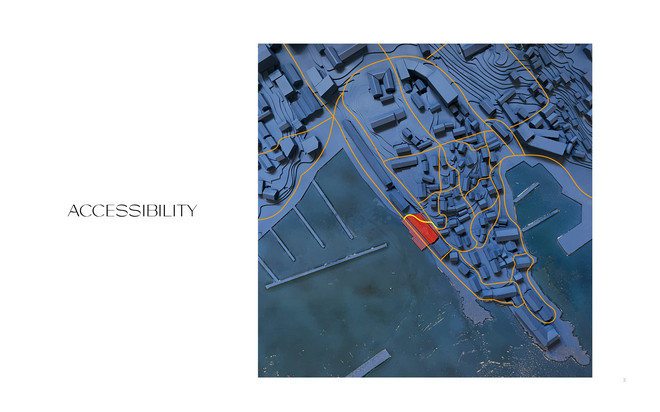
Rethinking the Process of Integration
There are two distinct ways in which minorities try to look and feel like the majority. These processes are called integration and assimilation.
Unfortunately, these two processes are often misunderstood as being identical.
Integration is a process where the minority cultures take something in from the majority culture to become a part of the majority culture retaining their identity.
Assimilation is a process of absorbing minority communities into ways and views of the majority community in a multicultural society.
Around the stoves, people can meet without cultural or social domination, they can enrich each other and forge links. By incorporating informal space, such as a kitchen, the vision is to use food as a cross influence to help the minority cultures to learn the Faroese language, cuisine and culture, the majority culture, and vice versa.

The projects main room consists of a kitchen, which is designed to pave the way for successful integration. The design is inspired by the diverse types of spaces, that various food cultures are centred around.
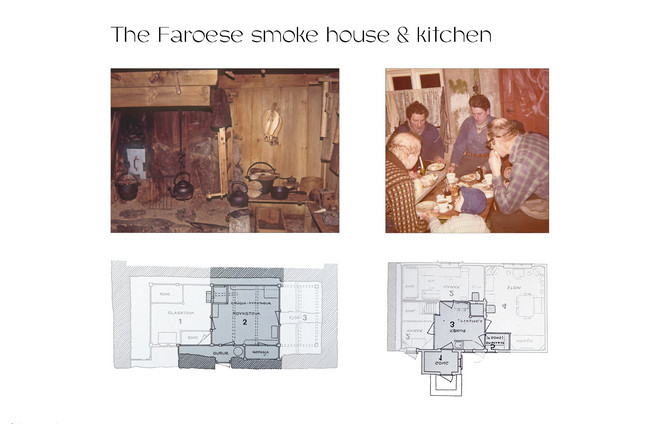
The essential space of the old settlements was the smoke house where all indoor activities took place, as this was the only heated space of the houses.
This space worked as the kitchen, workroom, livingroom and bedroom - furthermore it was common that travellers that journeyed across the mountains were welcomed and accommodated in this space. Therefore it is apparent that social activities have emerged from this space, like the lyrical tradition of singing together.
This cultural tradition has been preserved as a common aspect of indoor architecture, as the kitchen is still regarded as the main social arena.
Spatial Arrangements
The proposal accomodates transitional zones integrating the outdoors with the indoors, the public with the intimate, initiating open accessibility for people to meet across cultures. Eirið also houses other structures, such as administrative resources to ensure foreigners their rights and security, and to ensure a better meeting in the process of integration.
Drawings
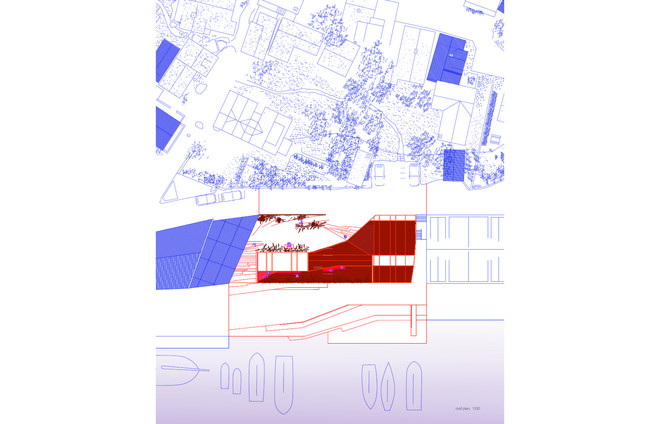


Models
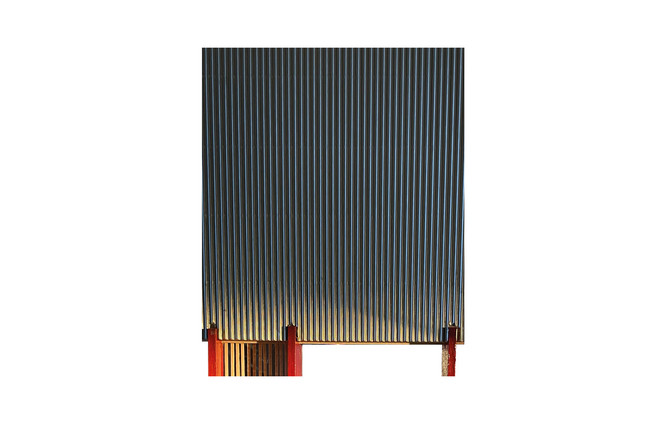
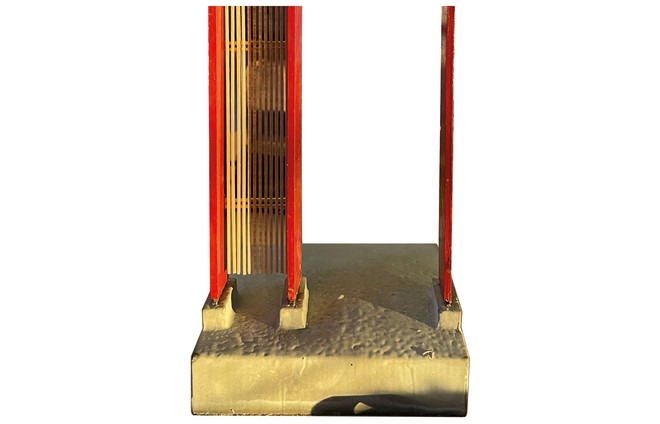
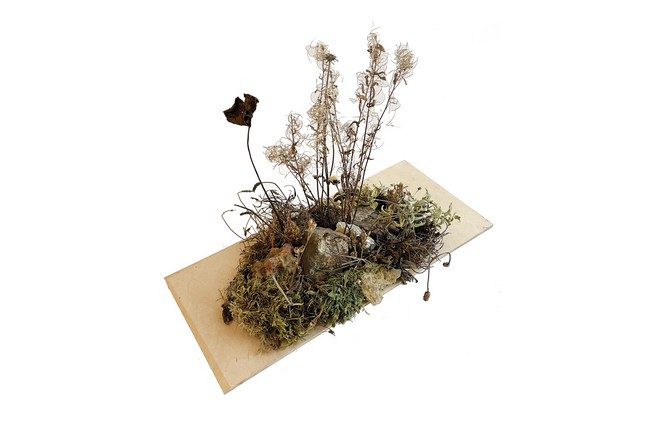
Det Kongelige Akademi understøtter FN’s verdensmål
Siden 2017 har Det Kongelige Akademi arbejdet med FN’s verdensmål. Det afspejler sig i forskning, undervisning og afgangsprojekter. Dette projekt har forholdt sig til følgende FN-mål